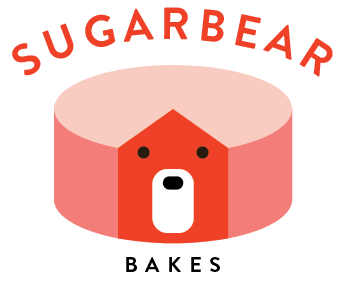Photo by: Ryan Feng
I've been experimenting with coffee macarons for a while now between doing it via French Method and Italian Method. My oven at home is INSANELY finicky so I've tested and tested and think I finally figured it out!
For this go-around, I used the French method. I also made these on a humid day so it look extra long for them to dry before baking. Definitely take my word for it and DO NOT make these a rainy day project unless you have the ability to dry out your kitchen by turning on the AC. For me, living in Santa Monica, I do not have such luxuries. If you insist on making these on a humid day, definitely go Italian method for a more stable egg white.
There are a ton of really amazing resources for macarons online but sometimes it can be VERY overwhelming to make them because these little suckers are so temperamental. Here are some of my favorite guides - Dessert First: based on the Pierre Hermé macaron... and this Misohungry troubleshooting guide.
It's important that you age your egg whites especially if you're using the French method. Crack your egg whites into a bowl and cover with plastic wrap and poke some holes in it or just cover with a piece of paper towel. If you're aging only 24hrs then leave them on the counter at room temp. If you're aging longer, place them into the fridge (up to 3 days) then remove and allow to come to room temp before using.
Espresso Macaron Shells
Makes 25 macarons depending on the size
Ingredients:
- 70 grams aged egg whites (at least 24-48 hours)
- 90 grams fine almond flour
- 110 grams powdered sugar
- 10 grams espresso powder
- 40 grams granulated sugar
- pinch cream of tartar
- 1 teaspoon unsweetened cocoa powder
1. In a food processor, add almond flour, powdered sugar and espresso powder. Pulse on high to mix and to get extra fine. This is going to be the most time intensive so it's important to prepare first before you even whip your egg whites. Sift the almond, sugar and espresso mixture at least 2 times. If you have the strength, go 3 times. :) Toss any big bits back into the food processor to grind up more and go through the sifter.
2. Prepare your piping bag with a round piping tip and prep your baking sheets with parchment paper or lined with silicone baking mats. If needed, apply templates to the size of the macaron you want to pipe then set aside.
3. Clean your stand mixer whisk, stand mixer bowl with a couple drops of fresh lemon juice and a paper towel. This will get rid of any fat or gunk that might mess with your egg whites.
4. Add your egg white and start to mix with the whisk attachment on medium low. When your egg whites are nice and frothy, add the pinch of cream of tartar. Now increase speed to medium high and stat to slowly add in the granulated sugar little by little. Increase speed to high once all the sugar has been incorporated.
5. Beat egg whites until it reaches a very thick, stiff peak. If there is any sort of softness to the peaks then beat again on high for another 10 seconds.
6. Now the macaronage process begins. Start by taking all the egg whites into a large mixing bowl. Add in 1/2 of the dry mixture and start folding the dry into the egg whites. Careful not to deflate the egg whites too much. Once that is practically all mixed in, add the rest of the dry mixture and continue folding until the batter looks like molten lava and creates a ribbon effect when you lift it out with a spatula. Do not over mix. It's better to have a slightly under mixed batter than over. In total, you're looking at 40-50 strokes. Any more and you might have over macaronaged your batter and remember adding to the piping bag is a few extra strokes. :(
7. Fill your piping back with the macaron batter. Pipe macarons by holding your bag upright and keeping your piping tip slightly higher than the parchment paper. The goal is to get as little air in them when you're piping as possible.
8. Once you're done piping the batter on the sheet, bang your sheet on the counter or stove top multiple times, keeping the tray level. Turn the sheet around and repeat. This will hopefully raise any air bubbles to the top.
9. Dust the tops of each macaron with cocoa powder.
10. Set aside for 40 minutes -1.5 hours so macarons can properly dry. Mine took closer to 2.5 hours cause it was humid. If you see any air bubbles pop up, take a toothpick and pop them. You'll want the shells to not feel tacky anymore. They should not stick to your finger when you touch them.
11. Preheat oven to 285F to 300F. It depends on the oven and how hot it runs. I've found that 285F worked for me and I had to DOUBLE LINE my sheet pans. But my oven runs hot with heat coming from the bottom. Make sure you play around with this on your oven.
12. Bake for 18-20 minutes total on the middle to higher rack. If macarons start to brown then turn the oven temp down or crack your oven door. Check macarons by lightly pushing the shell. The feet and top of the shell should feel stable and attached. If you used parchment you can try to peel a corner macaron off to check the bottom.
13. Wait for the macaron shells to cool completely on the sheet pan then remove from the parchment paper/silicon mat. From here you can fill these babies with any kind of buttercream to your heart's content. :)







